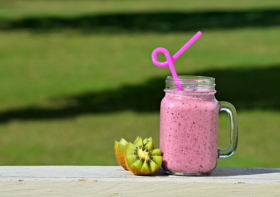Coping With Anxiety: Mindfulness Techniques For Everyday Life

In this article, you will discover the power of mindfulness in coping with anxiety in everyday life. Many of us often find ourselves overwhelmed by the stresses and anxieties of our daily routines. However, by incorporating simple mindfulness techniques into our lives, we can learn to manage anxiety effectively and find a sense of calm and clarity. Whether you’re dealing with work-related stress, relationship challenges, or general anxiety, this article will provide you with practical tips and strategies to help you navigate through difficult moments with ease. So, if you’re ready to take control of your anxiety and embrace a more peaceful and mindful existence, read on to uncover the world of mindfulness techniques for everyday life.
Understanding Anxiety
Anxiety is a common and normal emotion that we all experience at some point in our lives. It is a feeling of unease, worry, or fear about a particular situation or outcome. While a little bit of anxiety can be helpful in certain situations, such as preparing for a big presentation or taking an important exam, excessive and persistent anxiety can become a cause for concern.
Defining Anxiety
Anxiety is not just limited to worrying or feeling stressed. It can manifest in various ways, such as physical symptoms, emotional distress, and behavioral changes. Some of the common symptoms of anxiety include rapid heartbeat, sweating, trembling, difficulty concentrating, irritability, and restlessness. These symptoms may vary from person to person, and it’s important to remember that everyone’s experience with anxiety is unique.
The Benefits of Mindfulness
Mindfulness is a practice that involves bringing your attention and focus to the present moment. It is about being fully aware of your thoughts, emotions, and sensations without judgment. While mindfulness alone may not cure anxiety, research has shown that it can have a positive impact on managing anxiety symptoms and improving overall well-being.

Decreased Stress Levels
One of the significant benefits of mindfulness is its ability to reduce stress levels. By becoming more aware of your thoughts and emotions, you can identify stress triggers and learn how to respond to them in a calmer and more rational way. Mindfulness helps break the cycle of anxious thoughts and allows you to approach stressful situations with a clearer mind and a greater sense of calm.
Improved Emotional Regulation
Anxiety can often lead to intense and overwhelming emotions. Mindfulness can help you develop emotional regulation skills, allowing you to recognize, accept, and respond to your feelings in a more balanced and constructive way. By paying attention to your emotions without judgment, you can gain a deeper understanding of them and learn to navigate them more effectively.
Getting Started with Mindfulness
If you’re interested in incorporating mindfulness into your daily routine, here are a few tips to help you get started:
Creating a Daily Practice
To make mindfulness a habit, it’s important to set aside dedicated time each day for your practice. Start with just a few minutes and gradually increase the duration as you become more comfortable. You can choose to practice in the morning, during your lunch break, or before bed – whatever works best for you. Consistency is key, so try to stick to the same time each day.
Finding a Quiet Space
Find a quiet and comfortable space where you can practice mindfulness without distractions. It could be a corner of your room, a park, or any place where you feel calm and at ease. Make sure to turn off or put away any electronic devices that might interrupt your practice. Creating a peaceful atmosphere will help you focus and fully immerse yourself in the present moment.

Breathing Techniques for Anxiety Relief
Deep breathing exercises are simple yet powerful techniques that can help calm your mind and relax your body. They can be done anytime and anywhere, making them a convenient tool for managing anxiety on the go.
Deep Breathing Exercises
Sit or lie down in a comfortable position. Close your eyes and take a deep breath in through your nose, allowing your belly to expand as you fill your lungs with air. Hold the breath for a few seconds, then exhale slowly through your mouth, gently releasing any tension or stress. Repeat this deep breathing pattern several times, focusing on the sensation of your breath as it enters and leaves your body.
Diaphragmatic Breathing
Diaphragmatic breathing, also known as belly breathing, is a technique that involves using your diaphragm, a muscle located below your lungs, for slower and deeper breaths. Place one hand on your chest and the other on your stomach. Take a slow breath in through your nose, letting your stomach rise as you fill your lungs. Exhale slowly through your mouth, allowing your stomach to fall. Practice diaphragmatic breathing for a few minutes each day to promote relaxation and reduce anxiety symptoms.
Body Scan Meditation for Relaxation
Body scan meditation is a mindfulness practice that involves systematically scanning your body from head to toe, directing your attention to each body part and noticing any physical sensations or tension. This practice can help you cultivate a deep sense of relaxation and increase body awareness.
Step-by-Step Guide to Body Scan Meditation
Find a comfortable position either sitting or lying down. Begin by bringing your attention to your breath, noticing the sensations of your inhalation and exhalation. Slowly shift your focus to the top of your head and scan your body from head to toe, paying close attention to any areas of tension or discomfort. As you encounter these sensations, breathe into them and imagine releasing any tightness or stress. Continue this process, moving through each body part, until you reach your toes. Take a few moments to observe the bodily sensations as a whole before gently bringing your attention back to your breath.
Benefits of Body Scan Meditation
Body scan meditation can help you recognize and release physical tension, promote relaxation, and heighten your overall body awareness. By practicing this technique regularly, you can develop a deeper understanding of your body’s signals and learn to respond to them in a more mindful and compassionate way.
Mindful Eating for Anxiety Management
Mindful eating involves paying full attention to the experience of eating, noticing the tastes, textures, and smells of the food, and being present in the moment without judgment. This practice can help you manage anxiety around food and develop a healthier relationship with eating.
Eating Mindfully to Reduce Anxiety
Before you start eating, take a moment to pause and check-in with yourself. Notice any feelings or sensations of anxiety or stress that may be present. Take a few deep breaths to ground yourself in the present moment. As you eat, savor each bite, paying attention to the flavors, textures, and smells of the food. Chew slowly and fully, allowing yourself to truly experience the nourishment that the food provides. Mindful eating can help you cultivate a greater sense of gratitude and enjoyment for the meals you consume.
Savoring Every Bite
Many of us have fallen into the habit of mindlessly eating while distracted by other activities, such as watching TV or scrolling through our phones. By bringing mindfulness to your eating habits, you can break this cycle and fully engage in the experience of eating. Savoring every bite allows you to appreciate the food and can help reduce anxiety by fostering a sense of mindfulness and gratitude.
Visualization Techniques for Calming the Mind
Visualization is a powerful tool that can help calm the mind and reduce anxiety. By creating mental images that evoke soothing and peaceful feelings, you can cultivate a sense of calmness and serenity.
Using Guided Imagery for Anxiety
Guided imagery involves listening to or reading a script that guides you through a calming mental image or scenario. Close your eyes and imagine yourself in a peaceful and serene environment, such as a beautiful beach or a peaceful forest. Visualize every detail of this scene, from the colors and sounds to the sensations you might feel. Allow yourself to fully immerse in this visualization, letting go of any anxious thoughts or worries.
Creating Your Mental Sanctuary
Creating your mental sanctuary is a personal and unique practice that allows you to custom design a safe and serene space within your mind. Close your eyes and envision a place where you feel completely at ease and calm. It could be a cozy room, a tranquil garden, or any other setting that brings you peace. Imagine all the elements that make this space peaceful and nurturing, such as soft lighting, soothing scents, or comfortable furniture. Whenever you feel overwhelmed or anxious, you can mentally visit your sanctuary to find solace and relaxation.
Journaling as a Mindfulness Tool
Journaling is a powerful mindfulness tool that can help you explore and express your emotions, reflect on your triggers and patterns, and gain insight into your thoughts and feelings.
Expressing Emotions through Writing
Pick up a pen and notebook and allow yourself to freely express your emotions on paper. Write without judgment or censoring, allowing your thoughts and feelings to flow. This practice can serve as a safe outlet for releasing overwhelming emotions and can help you gain clarity and perspective on your anxiety.
Reflecting on Triggers and Patterns
Journaling can also provide a space for you to reflect on your anxiety triggers and patterns. Take time to write about situations or events that have caused anxiety in the past and explore how they made you feel. Identifying these triggers can help you develop strategies for managing them and reducing their impact on your daily life.
Engaging the Senses in Mindfulness
Engaging your senses can be a powerful way to bring yourself back to the present moment and ground yourself in mindfulness.
Using Aromatherapy to Soothe Anxiety
Aromatherapy involves using essential oils to promote relaxation and reduce anxiety. Choose essential oils such as lavender, chamomile, or bergamot, which have calming properties. Inhale the aroma directly from the bottle or add a few drops to a diffuser or tissue. Allow the scent to envelop you, taking deep breaths and letting go of any tension or stress.
Practicing Mindful Movement
Engage in mindful movement practices such as yoga or tai chi to reconnect your mind and body. These practices emphasize the connection between movement and breath, helping you stay present and focused. As you move through each pose or sequence, pay attention to the sensations in your body and the rhythm of your breath. Mindful movement can help alleviate anxiety by promoting relaxation and grounding in the present moment.
Building Resilience with Mindfulness
Resilience refers to the ability to bounce back from adversity and cope with life’s challenges. Mindfulness can play a vital role in building resilience and fostering self-compassion.
Recognizing and Challenging Negative Thoughts
Negative thoughts can fuel anxiety and make it difficult to cope with daily stressors. Practice mindfulness by becoming aware of negative thoughts when they arise. Challenge these thoughts by questioning their validity and replacing them with more positive and realistic perspectives. Cultivating a mindset of self-compassion and resilience can help you navigate through difficult times with grace and strength.
Fostering Self-Compassion
Being kind and compassionate towards yourself is essential in managing anxiety and building resilience. Treat yourself with the same warmth and understanding that you would extend to a friend facing similar challenges. Offer words of encouragement and practice self-care activities that nourish your mind, body, and soul. By fostering self-compassion, you can create a strong foundation for resilience and well-being.
Mindfulness is a journey that requires patience, practice, and self-compassion. By incorporating these mindfulness techniques into your everyday life, you can develop a greater sense of calm, resilience, and overall well-being. Remember, you are not alone in your struggle with anxiety, and there is support available to help you on your path towards a more mindful and balanced life.



Leave a Reply